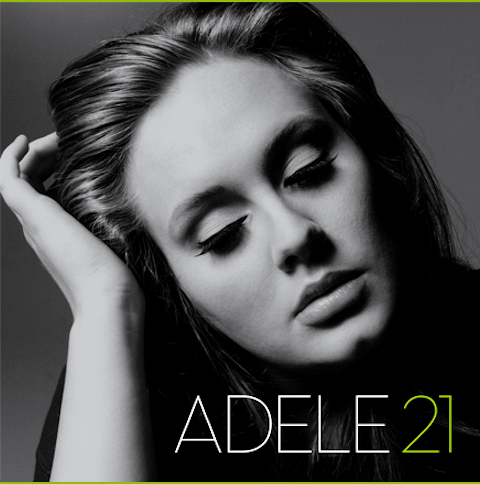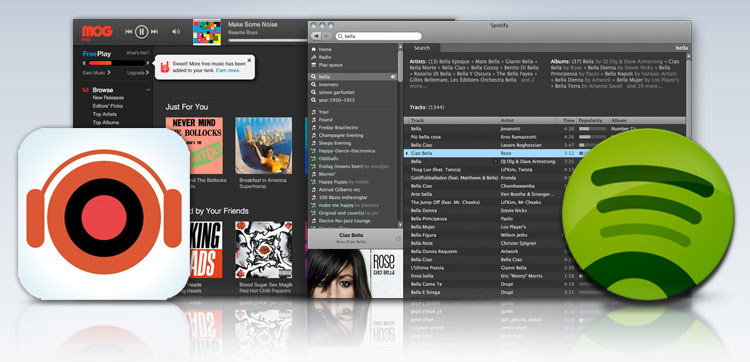Saturday, January 26, 2013
Daisy: Direct to (streaming) fans, but not marketed to them.
Two weeks ago Beats Electronics, the company led by Jimmy Iovine and Dr. Dre., announced they were starting their own music streaming service called Daisy that they will launch later this year. In a related move, Beats also made an undisclosed investment in Topspin, the online business that provides back-end digital services for musicians and labels to facilitate the direct to fan model. You can read the full article here from The LA Times.
This business play was recently the theme of serious discussion on this past week's Hypebot's Upward Spiral podcast (by the way if you are a serious musician, or serious about the music industry, you probably should be listening to this podcast). After listening to the show and reading up on the venture. Only one thought comes to mind.
You can seriously tell that the business side of the music industry is run by musicians, and that isn't necessarily a good thing.
Let me shed some light on this statement.
One of the biggest problems with most bands, is they don't give a damn about the fan, the person who pays for tickets, music, and merch; who, ultimately, puts food on the table for the artist. If they are a cover band, they normally choose songs they want to play, not what the fan wants to hear, and then they complain that nobody is showing up at their gigs. If the band is an all original unit, it is even worse. Most of the time, these groups refuse to play covers and try to force-feed their fans their own (mostly shitty) material. Then, they too, wonder why nobody shows up at their shows.
Now, before I get a million emails from bands telling me they don't do that, I must say this isn't an absolute truth, but I will guarantee it is well north of 80% of the acts out there.
And now we have Beats, run by a musician, moving into the streaming world. And they put another musician, Trent Reznor, in charge as Chief Creative Officer of the new initiative, whatever that means. No offense to Trent, he is one talented guy, and the founder of the CwF=RtB (connect with fans = reason to buy) model, but will this business venture work out with a musician in charge?
I can already see the problem with Daisy. The whole premise behind Daisy, is that it will give fans the chance to buy merchandise, tickets, and downloads direct from the artist, while they stream their favorite tunes. This doesn't appear to be a need set-fort by fans (consumer led marketing), but rather bands and labels (business to business marketing).
So here we go again. We are going to give the world another streaming service with no value proposition for the fans, but for the artists. So what is going to happen? Chances are Joe Blow the music fan won't give a shit, but Jimmy and His Big Dream Band will try, forcing Joe to change from Spotify to Daisy so he will buy concert tickets, merchandise, and music. They will send Joe emails, Twitter feeds, FaceBook Statuses, anything short of aerial cloud writing, hoping to get Joe to switch over from Spotify or Pandora, listen to their music, and hopefully impulse buy tickets.
Does this really appeal to the fan? The person who is the end consumer of the music industry?
My prediction is Daisy will show up with a big splash. It will appeal to bands and record labels, but not to fans. The service will survive with probably the same amount of users as MOG, which is around 500,000, and that will be it. Fans of music will stick to Spotify, Pandora, and iHeart and those ventures will see increased revenue.
That isn't to say the direct to streaming fan model isn't a great idea. It is so great that eventually Spotify, Pandora, and all the other streaming services will adopt Daisy's model. This will kill Beat's new business units value proposition, but will be awesome for musicians and labels. So at least some good will come of this. And for that I say thanks to Iovine, Dre, and Reznor.
Sunday, January 13, 2013
Spotify -VS- Mog
I have been using MOG for a little over a year, and really liked the service. I paid the $10 per month premium fee that allowed me to download as much music as my iPhone could hold and then play it back whenever I wanted, even without an Internet connection. From a financial standpoint, it just made more sense for me to drop $10 per month and get access to hundreds of albums as opposed to buying a single album at $10 or single tracks at $1.99 from iTunes. It's just a better way to explore new music.
Then I noticed that I was the only one on MOG. Many of my fellow employees and friends are on Spotify and had no idea that there was another streaming service out there similar to the market leader. So being a music industry professional I decided to switch over to Spotify and analyze the differences between the two. And here is what I've got so far.
The Similarities:
Both MOG and Spotify have the same amount of music, or fairly close. This is because many artists, labels, and managers use online aggregators to get their music to the market. So, if an album is on MOG, chances are it's on Spotify and vice versa.
They both have multiple tiered account options and are identical in price. In the MOG world you can pay $4.99 per month for unlimited music streaming from your computer and customized radio stations. For $9.99 per month you get all those options plus the ability to download music to your mobile devices to enjoy offline. And when you are on Spotify the options are the same and so are the monthly fees. From a business standpoint there are no competitive differentiations here.
Both services have radio features, customizable playlists, and Facebook integration.
The Differences (and they're not that huge):
MOG has a sexier user interface, especially on their mobile versions. They use less text and more icons to separate user options.
Spotify integrates your playlists across various platforms. As a MOG user, I always hated that my playlist on my computer didn't show up on my iPhone and my iPad. With Spotify, I was psyched to see my playlists update on all devices seamlessly.
MOG has a more customizable radio feature. With MOG you select the artist you want and then click on their "radio" button, from there you move a slider to select only that artist, similar artists, or varying mixes of both. This is much more fun than Spotify, who has you listen to songs and give them a thumbs up or down to customize the playlists.
This is what I have witnessed thus far. I will continue to use Spotify for now and document the differences between the two services. Right now I am leaning towards Spotify. Even though MOG has a sexier user interface, sharing playlists between devices is huge for me.
Saturday, January 5, 2013
2012: Physical Music Sales Aren't Dead, Country Rules, Adele is Still Queen, and UMG Dominates.
Well, it's that time of year again.
The time of year when most Americans are in the gym, at least for a month, because they all made the same New Year's resolution.
That time of year when you have your first heart attack because you haven't been in a gym for eleven months, or because you got that first credit card bill itemizing all of your holiday purchases and the interest you will be paying on them until next Christmas.
And it's that time of year when Nielsen Company & Billboard serve up their Music Industry Report, and we learn once again that physical sales are down, digital sales are up, and the music industry is still in turmoil.
Go ahead and read this year's report here.
Here is what this music business insider surmised after reading this year's report:
1. Physical albums are dying, but they aren't dead just yet.
Here's a big surprise physical album sales fell 12.8% in 2012 continuing the decline of tangible music transactions. But the funny part is that even though this category continues to decline at rapid numbers it still controls the market share. Physical sales were at 198 million units, and of that CD sales were at 193 million, while digital units were at 118 million. So even though we all think physical music transactions are completely dead. They really aren't.
2. Country is king (or queen).
This isn't your granddaddy's country music anymore. Gone are twangy songs about loosing your dog, your trailer, or your wife. Today's country is closer to pop and classic rock with artists such as Jason Aldean and Taylor Swift boosting the entire genre to new sales heights.
Here's looking at Country's amazing numbers:
Total Album Sales: +4.2%
Digital Album Sales + 37.8%
Digital Track Sales + 12.8%
Taylor Swift: #2 for Top Selling Albums, Top Artists, Top Digital Albums, Top Physical Albums, #3 for Top Internet Albums, and #3 for Top Artist Airplay, and #1 for Top Streamed Artists.
3. Adele's success of 2011 was so massive it boiled over to 2012.
 |
| “Adele’s album, 21, is the first album ever to be the top seller of the year for two consecutive years." |
4. The album continues to die.
In the digital world TEA stands for Track Equivalent Album. It takes ten tracks to make one full album. This helped push digital album sales up 14.10% for 2012, however when we factor in physical albums and true digital albums into the mix total album sales fell 4.4% for 2012.
5. Purchasing EMI payed off big for UMG.
With a controlling interest in EMI's assets UMG dominated the market share of the remaining major labels. They beat out their nearest competitor Sony Music Entertainment in all six categories between two and seven percent.
Subscribe to:
Comments (Atom)





